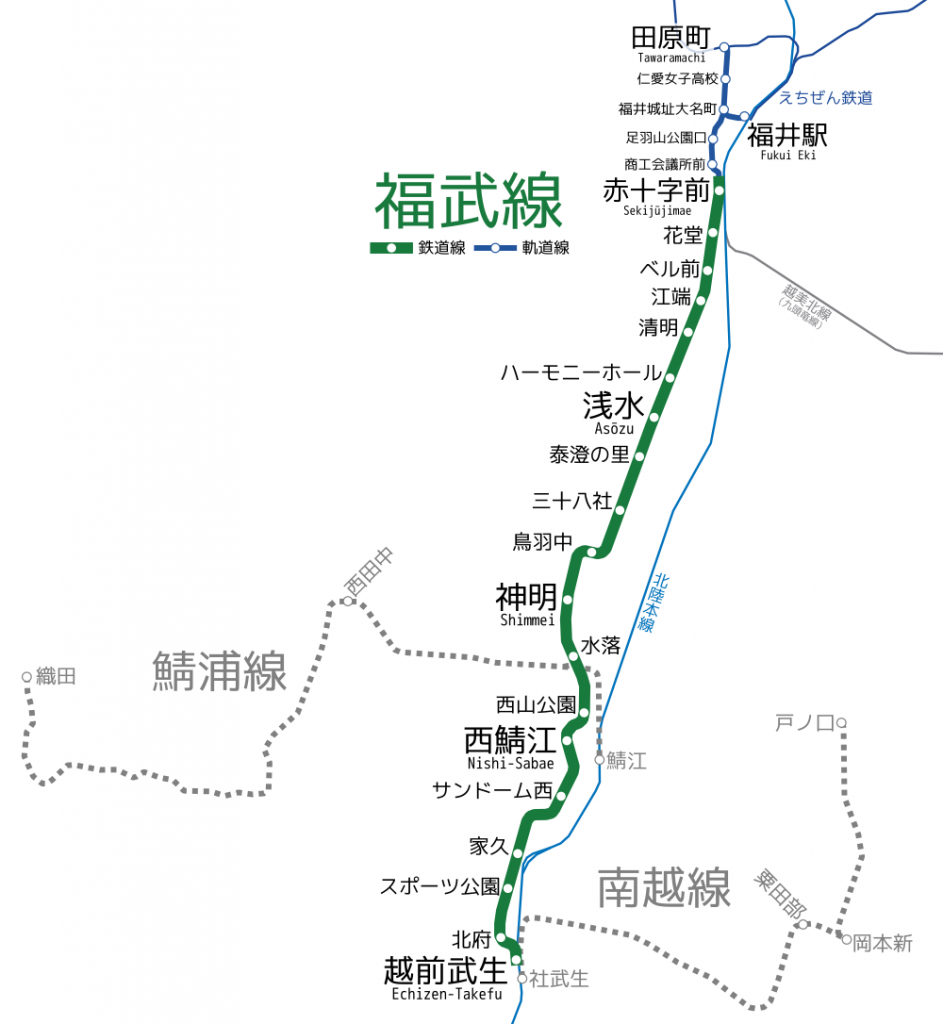Map Of Fukui
If you're planning a trip to Japan and want to explore the Fukui area, we've got you covered with this one-day itinerary. Located on the northern coast of Honshu island, Fukui boasts a rich history and culture, stunning natural scenery, and a unique culinary scene. Whether you're a history buff, nature lover, or foodie, there's something for everyone in Fukui.

Start your day by visiting Eiheiji Temple, one of the most important Zen Buddhist temples in Japan. Founded in 1244, Eiheiji is known for its serene atmosphere and beautiful architecture. Take a guided tour to learn more about the temple's history and its daily routines, including meditation and vegetarian meals.
Next, head to Fukui Prefectural Dinosaur Museum, one of the largest dinosaur museums in the world. With over 40 dinosaur skeletons on display, you'll feel like you've traveled back in time to the age of the dinosaurs. The museum also has interactive exhibits and a fossil preparation lab where you can see how paleontologists work.
After your visit to the museum, take a short hike to Tojinbo Cliffs, a series of rugged sea cliffs that offer stunning views of the Sea of Japan. You can also take a boat tour to see the cliffs from a different angle and spot some local wildlife.
For lunch, head to Yamamotoya Honten, a local restaurant that specializes in Echizen soba, a type of buckwheat noodle that is famous in Fukui. The restaurant has been around for over 200 years and is known for its traditional decor and friendly service.
In the afternoon, visit Maruoka Castle, one of the oldest and most well-preserved castles in Japan. Built in the 16th century, the castle features a unique "donjon" style tower and stunning views of the surrounding countryside. You can take a guided tour of the castle and learn more about its history and significance.
After your visit to the castle, head to Awara Onsen, a hot spring resort town that is known for its healing waters and stunning natural scenery. Here, you can relax in one of the many hot springs, visit the local shops and cafes, and enjoy the beautiful mountain views.
For dinner, head to Fukui Station's Ekimae-dori Street, where you'll find a variety of restaurants and eateries serving everything from sushi to ramen. Don't miss out on trying some of Fukui's local delicacies, such as "saba-zushi" (mackerel sushi) and "echizen-gani" (snow crab).
Finish your day by visiting the Asuwa Shrine, a Shinto shrine that is dedicated to the god of water and agriculture. The shrine's serene atmosphere and beautiful architecture make it a peaceful place to reflect and connect with nature.
Demographics and Culture
Fukui is a relatively small prefecture with a population of just over 780,000 people. The majority of the population is Japanese, with a small percentage of foreign residents. The area has a rich history and culture, dating back to the Jomon period over 10,000 years ago. Fukui is known for its traditional crafts, such as lacquerware and textiles, as well as its unique cuisine.
Tourist Destinations
Some of the top tourist destinations in Fukui include Eiheiji Temple, Fukui Prefectural Dinosaur Museum, Tojinbo Cliffs, Maruoka Castle, Awara Onsen, and Asuwa Shrine. The area is also known for its natural beauty, including the Echizen Coastline and the Hakusan National Park.
Shopping and Culinary
Fukui is known for its traditional crafts, such as lacquerware, textiles, and pottery. You can find these artisanal products at local shops and markets throughout the prefecture. In terms of cuisine, Fukui is famous for its Echizen soba, a type of buckwheat noodle that is often served with a variety of toppings and dipping sauces. Other local specialties include "saba-zushi" (mackerel sushi) and "echizen-gani" (snow crab).
Tips
If you're planning to visit Fukui, we recommend doing some research ahead of time to plan your itinerary and make the most of your trip. Some attractions, such as Maruoka Castle and Awara Onsen, require advance booking, so be sure to check the websites and make reservations if necessary. It's also a good idea to bring comfortable shoes and clothing, as many of the attractions involve walking and hiking. Finally, don't be afraid to try something new when it comes to cuisine - Fukui's unique dishes are some of the highlights of the region!
FAQ
What is the best way to get to Fukui?
Fukui is accessible by train from various cities in Japan, including Tokyo, Kyoto, and Osaka. The trip from Tokyo takes approximately 3 hours on the Hokuriku Shinkansen, while the trip from Kyoto takes about 2.5 hours on the Thunderbird limited express train. You can also fly into Komatsu Airport, which is located about an hour away from Fukui by train.
What is the best time to visit Fukui?
The best time to visit Fukui is during the spring and fall, when the weather is mild and the foliage is at its peak. The winter months can be cold and snowy, while the summer months can be hot and humid. If you're planning to visit during the peak tourist season, which is from late April to early May and from mid-October to mid-November, be sure to book your accommodations and attractions well in advance.
What are some other attractions in Fukui?
Other attractions in Fukui include the Fukui City History Museum, the Usagiyama Park Zoo, and the Myojoji Temple. You can also take a scenic drive along the Echizen Coastline or visit the Hakusan National Park for some outdoor adventures.
Overall, Fukui is a hidden gem that offers a unique blend of history, culture, and natural beauty. From the ancient temples to the modern museums, there's something for everyone in this charming prefecture. So why not add Fukui to your list of must-visit destinations in Japan?


